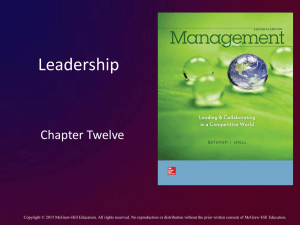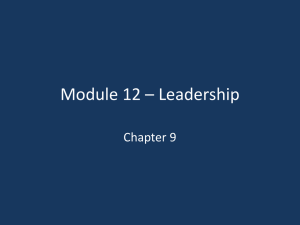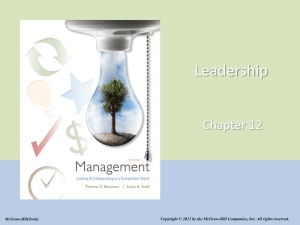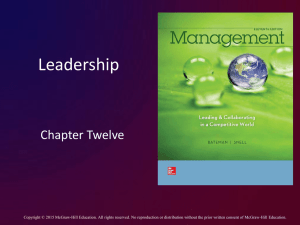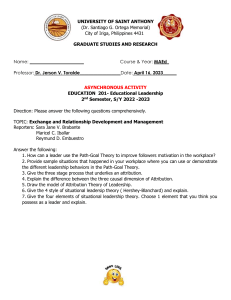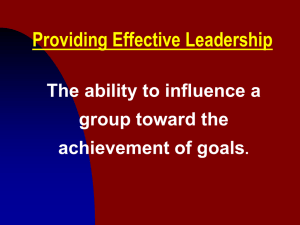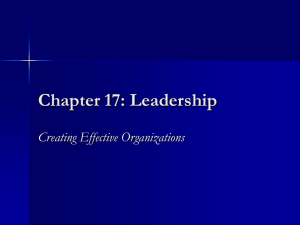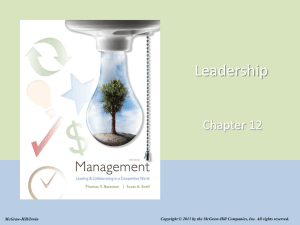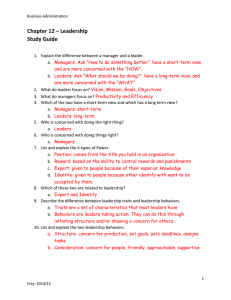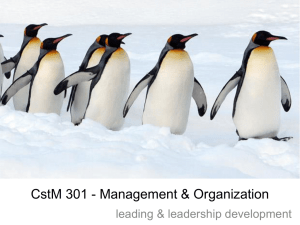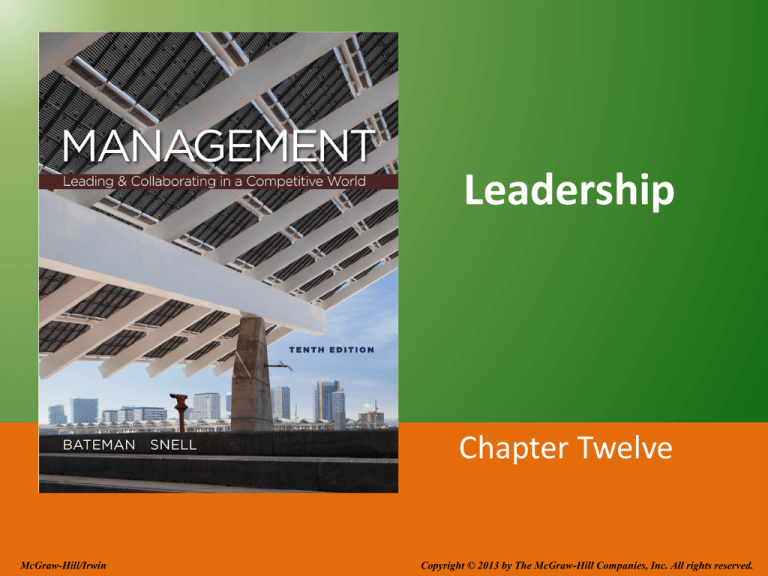
Leadership
Chapter Twelve
McGraw-Hill/Irwin
Copyright © 2013 by The McGraw-Hill Companies, Inc. All rights reserved.
Learning Objectives
LO 1 Discuss what it means to be a leader.
LO 2 Summarize what people want and what
organizations need from their leaders.
LO 3 Explain how a good vision helps you be a
better leader.
LO 4 Identify sources of power in organizations.
LO 5 List personal traits and skills of effective
leaders.
12-2
Learning Objectives (cont.)
LO 6 Describe behaviors that will make you a
better leader and identify when the situation
calls for them.
LO 7 Distinguish between charismatic and
transformational leaders.
LO 8 Describe types of opportunities to be a
leader in an organization.
LO 9 Discuss how to further your own leadership
development.
12-3
Leadership
Leader
One who influences others to attain goals.
The greater the number of followers, the
greater the influence
12-4
Vision
Vision
A mental image of a
possible and desirable
future state of the
organization.
12-5
Sources of Power
Figure 12.1
12-6
Leadership Grid
Figure 12.2
12-7
The Vroom Model of Leadership
Vroom model
Figure 12.3
A situational model
that focuses on the
participative
dimension of
leadership.
12-8
Fiedler’s Contingency Model
Fiedler’s contingency model of
leadership effectiveness
A situational approach to leadership
postulating that effectiveness depends on
the personal style of the leader and the
degree to which the situation gives the
leader power, control, and influence over the
situation.
12-9
Hersey and Blanchard’s
Situational Theory
Hersey and Blanchard’s situational
theory
A life-cycle theory of leadership postulating
that a manager should consider an
employee’s psychological and job maturity
before deciding whether task performance or
maintenance behaviors are more important.
12-10
Path-Goal Theory
Path-goal theory
A theory that concerns how leaders influence
subordinates’ perceptions of their work goals
and the paths they follow toward attainment
of those goals.
12-11
The Path-Goal Framework
Figure 12.5
12-12
Contemporary Perspectives on
Leadership
Charismatic leader
A person who is dominant, self-confident,
convinced of the moral righteousness of his
beliefs, and able to arouse a sense of
excitement and adventure in followers.
12-13
Contemporary Perspectives on
Leadership
Transformational leader
A leader who motivates people to transcend
their personal interests for the good of the
group.
Transactional leaders
Leaders who manage through transactions,
using their legitimate, reward, and coercive
powers to give commands and exchange
rewards for services rendered.
12-14
Opportunities for Leaders
Servant-leader
A leader who serves
others’ needs while
strengthening the
organization.
Bridge leaders
A leader who bridges
conflicting value
systems or different
cultures.
12-15

